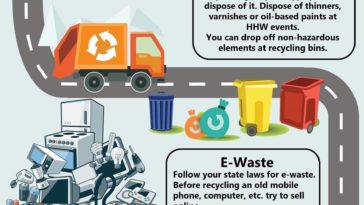Practical Recommendations For Waste Control While Renovating Your Home
Practical Recommendations For Waste Control While Renovating Your Home
Blog Article
Published By-Reece Robertson
When starting a home improvement, waste administration could not be the first thing on your mind, yet it's a critical facet of the process. By applying a couple of basic techniques, you can considerably lower the environmental impact of your job. From smart decluttering strategies to creative reusing options, these quick suggestions will certainly not just boost the performance of your renovation but additionally add to a much more lasting outcome.
Pre-Renovation Decluttering
Before diving right into your home renovation task, decluttering your space is a crucial step to ensure a smoother and much more well organized process. Beginning by examining related internet page and identifying what items are necessary and what can be thrown out or contributed. Be fierce in your decluttering efforts; if you have not made use of a product in over a year, it may be time to allow it go.
Kind items right into groups such as maintain, contribute, reuse, or dispose of. Invest in storage space remedies like bins or racks to help arrange the products you pick to keep. This won't just declutter your area however also make it easier to find things throughout and after the improvement.
Decluttering prior to the renovation will not only streamline the procedure yet additionally save you money and time. You'll have a clearer vision of what needs to be done and will not be bewildered by unneeded things.
As soon as you've decluttered, you can progress with your restoration task with a fresh and organized room.
Reliable Waste Arranging
To guarantee a smooth and eco mindful home renovation procedure, efficient waste sorting is important. As you begin your restoration job, established marked sorting areas for various types of waste.
Putting separate containers or containers for recyclables, hazardous products, and general waste will improve the disposal procedure and make it much easier to draw away recyclable materials from winding up in land fills.
Tag each sorting area plainly to avoid complication and make sure that everyone associated with the renovation recognizes where each type of waste must go. This basic step can assist prevent blending of materials that could infect recyclables or develop security risks during disposal.
Recycling and Upcycling Approaches
Effective waste sorting collections the structure for a successful home renovation task. When it concerns taking care of waste during your remodelling, reusing and upcycling strategies play a critical duty in minimizing garbage dump waste and making best use of the possibility of your materials.
Start by assigning separate bins for different types of recyclables like glass, plastic, and paper. Talk to your neighborhood recycling facilities to guarantee you're following the correct guidelines for disposal.
Think about upcycling items like old furnishings, doors, or closets rather than throwing them away. With a fresh layer of paint or some creative changes, you can give these products a brand-new life in your remodelled room. Upcycling not just reduces waste but likewise adds a special touch to your home decoration.
Search for contribution centers or companies that accept recyclable building products. By contributing products like lighting fixtures, cabinets, or tiles, you can assist others while decluttering your area. Keep in construction dumpster , a little effort in reusing and upcycling can go a long way in making your home remodelling project extra lasting and environmentally friendly.
Conclusion
To conclude, by complying with the quick tips for handling waste throughout a home improvement, you can make the procedure more effective and eco-friendly. Decluttering before starting the remodelling, sorting waste right into marked containers, and taking into consideration reusing or upcycling options can help minimize the quantity of waste mosting likely to land fills. With a little extra effort, you can make a big impact on the sustainability of your project.
